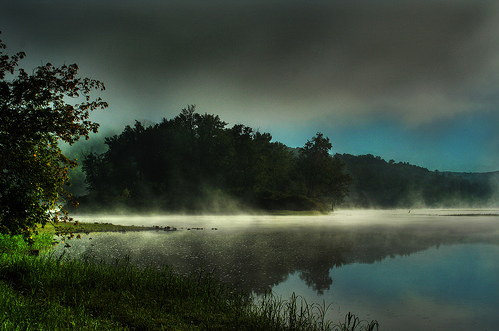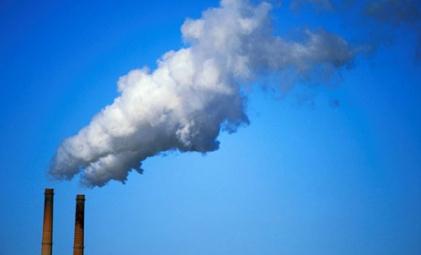63 F. high temperature yesterday in the Twin Cities.
59 F. average high on October 14.
68 F. high on October 14, 2015.
October 15, 1968: Unseasonably warm weather moves into central and southern Minnesota. The high was 85 in the Twin Cities.
October 15, 1899: Heavy rain falls, with 3.2 inches in the St. Cloud area and 2.1 inches in Willmar.

Not Bad for October, But Not Quite Indian Summer
Considering we could be knee-deep in slush I don’t take 70s in mid-October for granted. Not when the sun is as high in the sky as it was in late February. A lukewarm breeze, without the humidity, bugs and raging thunderstorms.
At the rate we’re going this may just be Minnesota’s wettest year on record. Dr. Mark Seeley reports a record 50.6 inches of rain in Waseca, with over 2 months left to add to the tally.
Warmth and moisture was ideal for Minnesota’s corn crop: a record 1.49 billion bushels expected; higher than 2015’s previous record of 1.43 billion bushels. Assuming farmers can get out into their mud-swept fields.
A surge of milder air sets off a smear of clouds this weekend; if the sun breaks through for a couple hours we could hit 70F. The best chance of showers and T-storms comes Sunday night with a gradual cooling trend next week. No drama.
By the way, the term “Indian Summer” refers to unusually mild weather following the first frost, which MSP still hasn’t seen, at least not officially.
Then again this is America. You have the freedom to call it whatever you want.
Who am I to stop you?

Minnesota’s Warm, Wet Bias Continues. Here’s an interesting nugget from Dr. Mark Seeley’s always-informative weekly WeatherTalk update: “…Indeed, 6 of the 9 months so far this year have been significantly warmer than normal in Minnesota, two months were slightly warmer than normal, and only April of this year was cooler than normal on a statewide basis. The last significantly cooler than normal run of temperatures in Minnesota of 3 months duration or longer was from November of 2013 to April of 2014, a run of 6 consecutive months. Since 1996 only three years in Minnesota have been cooler than normal when averaging all 12 months. Those were 2008, 2013 and 2014…”
Peaking Fall Color. This may be the weekend to pile into the car and take a nice, long drive. Maybe bring your “camera”? You remember cameras, don’t you. Before you could do everything but make toast on little, pocket-size supercomputers called “smartphones”? The next 2 weekends bring peak color around the metro. Source: Minnesota DNR.
Temperatures Trend Above Average into Tuesday. No bitter air shaping up looking out 7-10 days, although it will cool off again by the middle of next week. Parts of the Twin Cities metro (close-in suburbs) could, in theory, wind up with a growing season 30 days or more longer than average. ECMWF data: WeatherBell.
Cold and Stormy Correction by Late October? Confidence levels are low, but the 2-week 500 mb forecast (GFS) suggests strong zonal winds buckling, carving out a deep trough of stormy low pressure over the Plains and Midwest. Which could, in theory, translate into a series of rain events, even wet snow in time for Halloween.
A Guide to Frost. Thanks to Aeris meteorologist Susie Martin for putting together a great primer on frost; here’s the intro: “As chilly temperatures begin to unfold, we often get to experience of one of nature’s most beautiful phenomena: frost. Frost is also a defining highlight of the Fall season. During the warm Summer months, we often see dew covering the grass in the morning. However, when surface temperatures hit freezing or below, we start to notice frost and there are various types of frost that you may notice throughout the cold weather season. This is due to a process called “deposition,” which is when water vapor molecules turn from gas directly to a solid. Deposition is the reason for the coating of ice we see during a chilly morning. We put together this list to help you identify the type of frost you see and perhaps generate an appreciation for the science behind what you’re seeing!...” (Image: Wikipedia).

Portland, Oregon NWS Issues Record 10 Tornado Warnings on Friday. I haven’t seen this before. Details via KOMOnews.com. Reuters has details on some of the most severe tornado damage.
Hurricane Force Winds Coming to Oregon/Washington State. Dan Satterfield has more details on the 1-2 punch; an even stronger storm comes ashore later today with damaging winds and torrential rains.
La Nina Watch. The on-again, off-again La Nina Watch is on again, according to NOAA CPC, calling for a cooling of Pacific Ocean water into the winter months. Will this result in a colder, harsher winter for North America? It’s still too early to tell, but the way the trends are going I wouldn’t bet on it.
Here’s Why It’s Still Flooding in North Carolina, Days After Hurricane Matthew. Here’s an excerpt of a story that caught my eye from Dr. Marshall Shepherd at Forbes: “…Inland freshwater flooding and storm surge are the true hurricane killers according to numerous studies. If storms like Hurricane Katrina and Hurricane Sandy are not included in these studies freshwater flooding may actually rank as the deadliest factor. In 2000, Ed Rappaport found that inland freshwater flooding caused over half of the 600 U.S. deaths in Atlantic tropical cyclones (1970–1999)…”
Hurricane Matthew Brought 1,000 Year Record Rainstorms to North Carolina. This would be the 6th thousand-year flood to strike the USA since October of 2015 (Texas, South Carolina, West Virginia, Maryland, Louisiana – now North Carolina). Here’s an excerpt from Pacific Standard: “The storm swept in by Hurricane Matthew has produced rainfall that exceeds the level expected about once every 1,000 years, according to a statistical analysis using National Oceanic and Atmospheric Administration data. Matthew broke numerous rainfall records in some of North Carolina’s toughest-hit towns, marking another spike in this year’s extreme weather. The new rainfall records were enabled by warming in the ocean and coastal atmospheres, which hold more water as temperatures increase — with a few cities across the Southeast reporting record levels of air moisture during the storm…” (October 6 file image: NOAA and AerisWeather).
Wind Patterns In The Lowest Layers of Supercell Storms Key Tornadoes. Here’s an excerpt of an interesting press release at EurekAlert! Science News: “…We noticed that the biggest difference between tornadic and nontornadic storms was the wind in the lowest 500 meters near the storm,” Coffer says. “Specifically, it was the difference in the way the air rotated into the storm in the updraft.” All storms have an updraft, in which air is drawn upward into the storm, feeding it. In supercells, the rising air also rotates due to wind shear, which is how much the wind changes in speed and direction as you go higher in the atmosphere. Coffer’s simulations demonstrated that if wind shear conditions are right in the lowest 500 meters, then the air entering the updraft spirals like a perfectly thrown football. This leads to a supercell that is configured to be particularly favorable for producing a tornado, as broad rotation at the ground is stretched by the updraft’s lift, increasing the speed of the spin and resulting in a tornado…”
File photo credit: Caryn Hill.
How To Reduce Risks from Mega-Storms. Deutsche Welle has the story: “Climate change is increasing storm frequency and intensity, while sea level rise has made storm surge more dangerous. What solutions exist for reducing the risk of disaster? Hurricane Matthew provides recent lessons. “Hurricane Matthew has been a surprise for the disaster risk community,” Reimund Schwarze, chairman of the Scientific Advisory Board for the German Committee for Disaster Reduction (DKKV) told DW. This bitter surprise has left some 2 million people affected in Haiti alone. Cropland and homes have been ravaged, potable water is barely available, children cannot go to school and cholera is spreading quickly in affected areas…”
The $50 Billion Plan to Save Louisiana’s Coast Gets a Rewrite. NOLA.com has the story: “The entire land bridge between New Orleans East and Slidell is gone, making Lake Pontchartrain and Lake Borgne a single body of brackish water. To the west, the land bridge between LaPlace and Pontchatoula also has vanished, subsuming Lake Maurepas into an even bigger Pontchartrain. That’s the alarming prediction of a brightly stained map that researchers are shopping around Louisiana as they rewrite the state’s master plan for coastal restoration and hurricane protection. The map is the latest estimate of what Louisiana will look like in 50 years if no further restoration efforts are undertaken and the worst estimates of sinking land and rising seas come to pass...”
President Obama Orders Government To Prepare for “Space Weather” Chaos. God help us if an X-Class solar flare hits the U.S. directly, because we may get an instant glimpse of life in the mid-1800s. Here’s an excerpt from NBC News: “Turning his attention to the heavens — and how turbulence there could create chaos on Earth — President Obama directed the federal government Thursday to come up with a plan to deal with “space weather.” Space weather, by the way, is a catch-all for disturbances in the area between the sun and Earth, such as solar flares, that wreak havoc on the electrical power grid, GPS systems, aviation equipment, satellites and other technology that have become integral to human life…”
Photo credit: “The Aurora australis, also known as the southern lights, glows above the Earth on July 15, 2012.” Joe Acaba / NASA via AP.

Clinton Camp Worried Carbon Tax Would Be “Lethal”. Here’s an excerpt at TheHill: “Hillary Clinton’s campaign manager feared that endorsing a carbon tax would be “lethal” to her campaign. Hacked emails released Thursday by WikiLeaks belonging to John Podesta showed her top aides trying to to walk a fine line on a carbon tax, neither endorsing it nor ruling it out. The email chain shows a window into one of many balancing acts that Clinton, the Democratic presidential nominee, has faced in her 2016 campaign, trying to alienate neither the progressive wing of the Democratic Party nor potential swing voters…”
Photo credit: Glen Stubbe, Star Tribune file. “Power generation at Sherco in 2012.”
The U.S. Government Just Made Its Biggest Clean Energy Purchase Ever. Resilient, self-sufficient, not dependent on oil trains or naval escorts to power their bases? What a concerpt. Here’s an excerpt from The Washington Post: “…The new 150-megawatt, or million-watt, Mesquite 3 solar array is located in Arizona, but the electricity it generates will be sent to California’s electric grid and will power roughly one-third of the electricity needs of 14 naval installations in the state, including San Diego’s naval base and the Marines’ Twentynine Palms and Camp Pendleton. “Today we’re going to throw a switch and start getting those electrons flowing to our 14 bases,” said Dennis McGinn, the assistant secretary of the Navy for energy, installations and environment, who spoke from Arizona where he was on site for the opening ceremony for the plant…”
Photo credit: “The Mesquite 3 solar array in Arizona.” (Sempra Energy)
All Of The New Electricity Capacity Brought Online in the U.S. in August Was From Solar or Wind. Here’s an excerpt from the Institute for Energy Economics and Financial Analysis: “Solar and wind powered all of the new power plants that began operations in August. A total 20 projects with a combined capacity of 463 MW were added in August, with 55% of the capacity coming from solar projects and 45% coming from wind-powered generators. No new projects were announced in the month…”
The Cheapest Cities To Base Your Tech Start-Up. Here’s an excerpt from Bloomberg: “…Ranking 20 cities, the CBRE report had San Francisco, unsurprisingly, at the top, followed by New York, which is almost $6.5 million cheaper than the West Coast technology hub. Looking at what the report calls “secondary markets,” the cost of doing business drops significantly in such places as Charlotte, Minneapolis, and Philadelphia…”
Why Insurance Companies Want to Subsidize Your Smart Home. Here’s the intro to a story at MIT Technology Review: “Insurers such USAA and American Family have lately begun offering to strike a high-tech bargain: wire your home with Internet-connected devices such as a new thermostat, and get a discount on your home insurance policy in return. Offers like that could speed up the adoption of smart gadgets, revamp the insurance business, and transform how we manage our homes. In the future, your insurer might call a plumber before a pipe bursts, for example. But the data needed to help prevent leaks or burglaries will also introduce new risks, such as vulnerabilities to data loss or ransomware...”
Image credit: arizonaehomes.com.
Why Most People Will Never Be Successful. Way to pop my balloon. Here’s an excerpt from Inc: “Success” isn’t just having lots of money. Many people with lots of money have horribly unhappy and radically imbalanced lives. Success is continuously improving who you are, how you live, how you serve, and how you relate. So why won’t most people be successful? Why don’t most people evolve? The more evolved you become, the more focused you must be on those few things which matter most. Yet, as Jim Rohn has said, “A lot of people don’t do well simply because they major in minor things…”
On The Other Hand. This made me laugh on Friday – we all need to try and keep our sense of humor during this (insane) election season. Credit: Instagram.

TODAY: Mostly cloudy, breezy and milder. Passing shower or sprinkle. Winds: SW 10-15. High: 68
SATURDAY NIGHT: Patchy clouds. Low: 51
SUNDAY: Still mild for October. Lot’s of clouds – few T-storms late. Winds: SE 8-13. High: 69
MONDAY: Gray, turning cooler, few sprinkles. Winds: NE 8-13. Wake-up: 56. High: 68
TUESDAY: More clouds than sun, temps. close to average. Winds: NW 10-15. Wake-up: 53. High: 61
WEDNESDAY: Partly sunny, feels like fall again. Winds: NW 8-13. Wake-up: 43. High: 57
THURSDAY: Early frost in the suburbs, blue sky. Winds: NE 7-12. Wake-up: 37. High: 52
FRIDAY: Clouds increase, no weather drama. Winds: S 8-13. Wake-up: 38. High: near 60
Climate Stories….
Scientists Warn Negative Emissions Are a “Moral Hazard”. Will we ever be able to (cost-effectively) suck CO2 out of the air to slow the global warming trend? Perhaps – but can we count on it? Here’s an excerpt from Climate Central: “Removing carbon dioxide emissions from the atmosphere to prevent global warming from becoming catastrophic may be a fool’s game amounting to a “moral hazard par excellence,” according to a paper published Thursday in the journal Science. Nobody knows if atmospheric carbon removal — known as negative emissions — will work, and it could delay critical cuts to emissions while tacitly giving people license to pollute, the paper says…” (File image: NASA).
Photo credit: “Michaela Sumpter and Cameron Wiltz, 3, evacuate the Forestwood Apartments in the Olde Towne area after Hurricane Isaac passed through Slidell, Louisiana, August 30, 2012.” Credit: Michael Spooneybarger/Reuters.

The “Climate Change Election” That Never Came. Here’s an excerpt from New Republic: “…But there may also be a deeper, psychological reason for the short shrift given to climate change. “It’s human nature to prioritize immediate problems over future problems,” said Rebecca Leber, an editor at Grist. “Politicians often frame climate change as a future problem, and of course it rates lower on your priorities if you think it’s something that doesn’t need to immediately be addressed.” And when climate change is framed as an immediate problem by politicians and journalists alike, it’s often by linking it—sometimes spuriously—to headline-grabbing natural disasters such as hurricanes and floods...”
Coffee and Climate Change: In Brazil, A Disaster is Brewing. Not the coffee. Anything but the coffee, please! Here’s an excerpt from NPR: “Coffee lovers, alert! A new report says that the world’s coffee supply may be in danger owing to climate change. In the world’s biggest coffee-producing nation, Brazil, the effects of warming temperatures are already being felt in some communities. You can see the effects in places like Naygney Assu’s farm, tucked on a quiet hillside in Espirito Santo state in eastern Brazil. Walking over his coffee field is a noisy experience, because it’s desiccated. The leaves from the plants are curled up all over the floor, in rust-colored piles. The plants themselves are completely denuded…”

